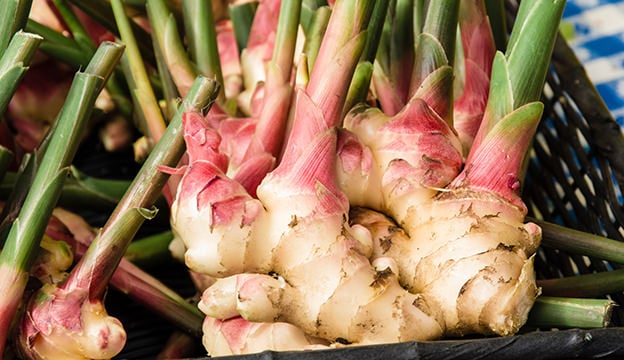The Beginner’s Guide to Growing Squash in the UK

Table of Contents
Squashes are some of the most attractive plants out there that bear fruits that are simply delicious. The fruits are of different colors, shapes, sizes, and flavours, depending on the variety of the plant. There is no denying that this plant is a worthwhile venture in your garden.
But growing Squash in the UK also begs the question of the support they need. The vining variety of squashes spread over a huge amount of space. So can they be grown vertically instead? What variety of squashes are the best for vertical growth, and indeed if it is even a good idea? In this article, we discuss the steps you must take to grow your squash on a trellis.
We also explain why growing Squash in the UK is the best gardening decision you will ever make.
How To Support Squash As It Grows
Squashes are mostly two types, ones that form a bushy habit and others that form vines on the ground. Bushy squashes need no support and can grow well by themselves. But vining squashes spread over a huge amount of area during their growth. This can be problematic if you do not have plenty of space available.
So while growing squash in the UK, most gardeners prefer to use a support to grow them vertically. If one of these vining plants grows and spreads over 15 feet, there will be a big shortage of ground. Thus growing them vertically saves them this big amount of space that can now be used to grow other plants.

But you must remember that not all types of squashes should be made to grow on trellises. Fruits such as Hubbards, Calabasas, and pumpkins can grow big and might break or bend your trellis. Therefore, if you have the space, let these varieties spread on the ground.
It is usually advised not to trellis any variety that bears individual fruits above the weight of 10 pounds. You can choose from the many other varieties that bear smaller squashes. However, if any growing squash in the UK is exceptionally large, use a sling to support them.
1. Choose the Kind of Squash that Will Grow Vertically
Among the two types of squashes, the ones that will grow vertically are the vining kind. The bushy varieties will not take to any trellises, no matter how much you try. The easiest way to know what kind of squash to grow would be by reading the seed packet. You can also do some research online and pick many varieties of both summer and winter-growing squash in the UK.
Summer Squash
Squahes that grow in summer get plenty of sunlight, so the fruits can be quite large. If you grow one variety of both male and female squashes, you can ensure future fruits quite easily. Additionally, their flowers are also edible.
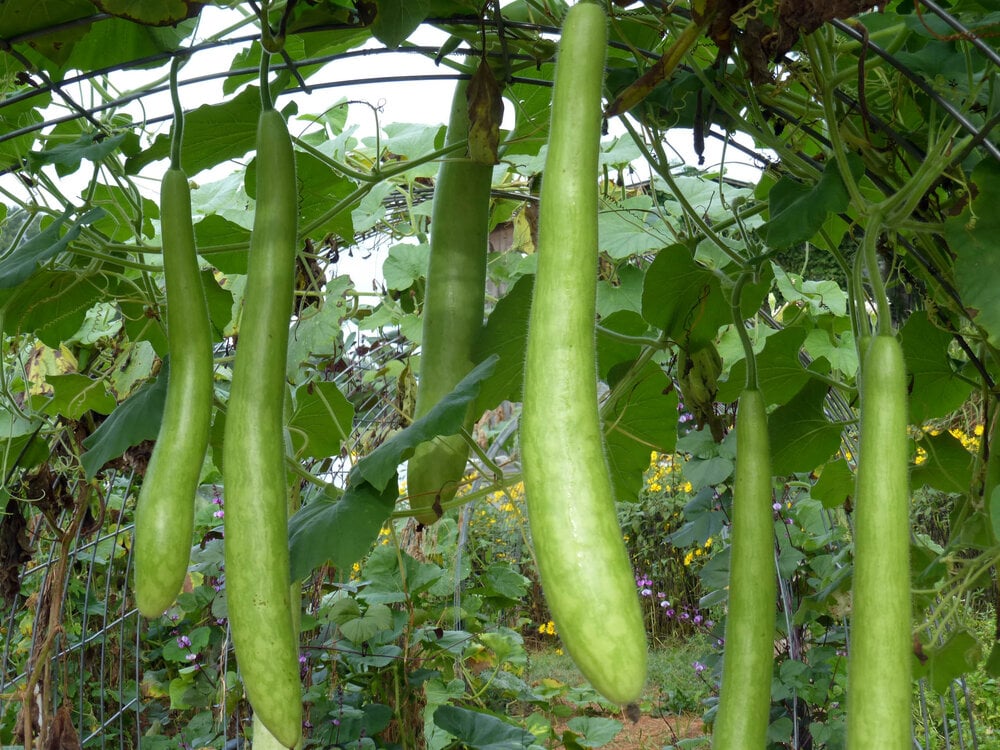
Calabash Long Squash is a variety of gourd that is still one of the most popular summer squashes out there. They are long and green, growing 2 to 4 inches in total, making them perfect for trellises. Other summer squashes that can grow vertically are little gem squash, patty pan squash, and yellow squash.
Winter Squash
Winter squashes need plenty of time adjustments, as the fruits take about 80 to 110 days to ripen. But you need to make sure that they are warm enough to survive any chance of frost. These winter squashes also escape their fences and boundaries, making them the perfect candidate for trellises.

Acorn squash is the best winter-growing squash in the UK. You can put it on a trellis as they are delicious. Simply roast the squash inside an oven with some honey and cinnamon, and you will have yourself a winter delicacy. Other popular winter squashes are butternut squash, delicata squash, and sugar pie pumpkin.
2. Choose The Right Kind Of Support
Squashes are large, so choosing the right support means keeping in mind the number of heavy fruits it may bear. There are many kinds of trellises available that support different kinds of vines, but many of them any flimsy. The aesthetic and intricate ones can often tumble due to the weight of the fruits.
While choosing support, the first factor you have to consider is the kind of materials you have available. Money also plays a big role in the kind of trellis you can procure for your garden. Growing Squash in the UK means you should have a little understanding of the skills required for quick solutions. Here are a few options that can support your squashes easily.
Pergolas
Pergolas are often seen in gardens as they make an excellent shaded walkway. The frame is made of pillars that support crossbeams and a sturdy open lattice. They are loved because of the shade and privacy they provide. This structure may take some effort, but growing squashes on them yield great results.

Fences
Another way to grow your squashes vertically is to make a fence out of mesh wires. The sturdy support on the southern side of your property will help the plant get plenty of sunlight. You can also put your support against a south-facing wall so that the other plants are not deprived of light.
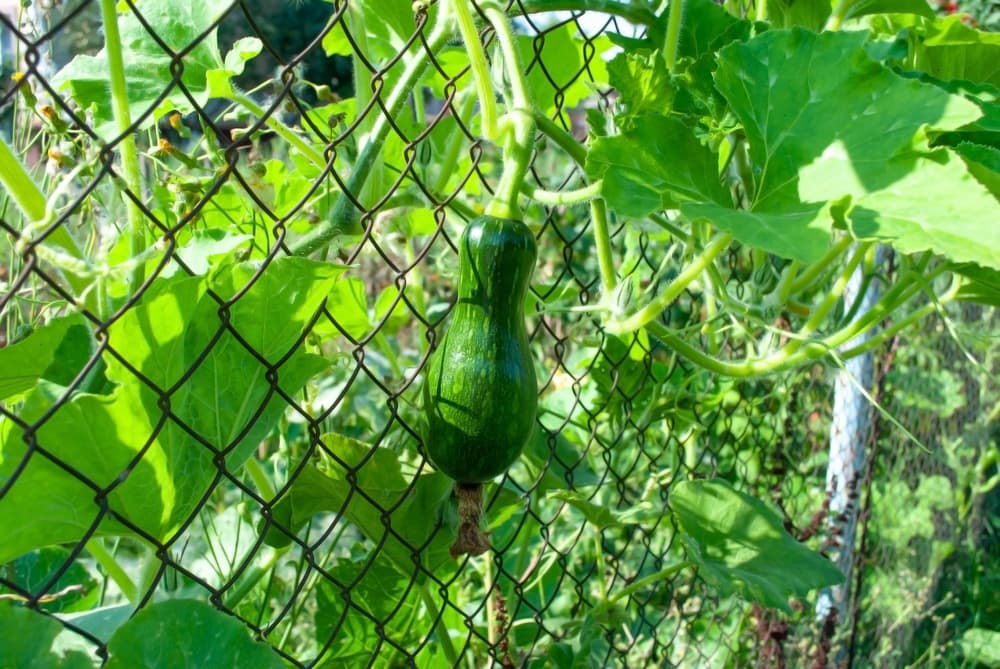
Trellis
If you do not have existing support structures for your squashes, you can easily build yourself a trellis. Many kinds of structures are quite effective, like a vertical trellis affixed to the ground. You can also make an A-framed trellis as they are mobile and inexpensive. An archway trellis also gives the growing Squash in the UK all the support it needs.

3. Plant the Squash
The first thing to remember when making your trellis and planning your squash plantation is its location. Keep the structure at the back of your garden so that its shade doesn’t keep the other plants from getting their sunlight. The next step is to make sure that your trellis is strong and able to support your growing squash in the UK.
Make sure the ground is not waterlogged before you get to planting. Squashes love soil that is rich and moisture-retentive. So prep the soil beforehand with some homemade compost or well-rotted manure. You can also scatter some general-purpose fertilizer for a good crop.
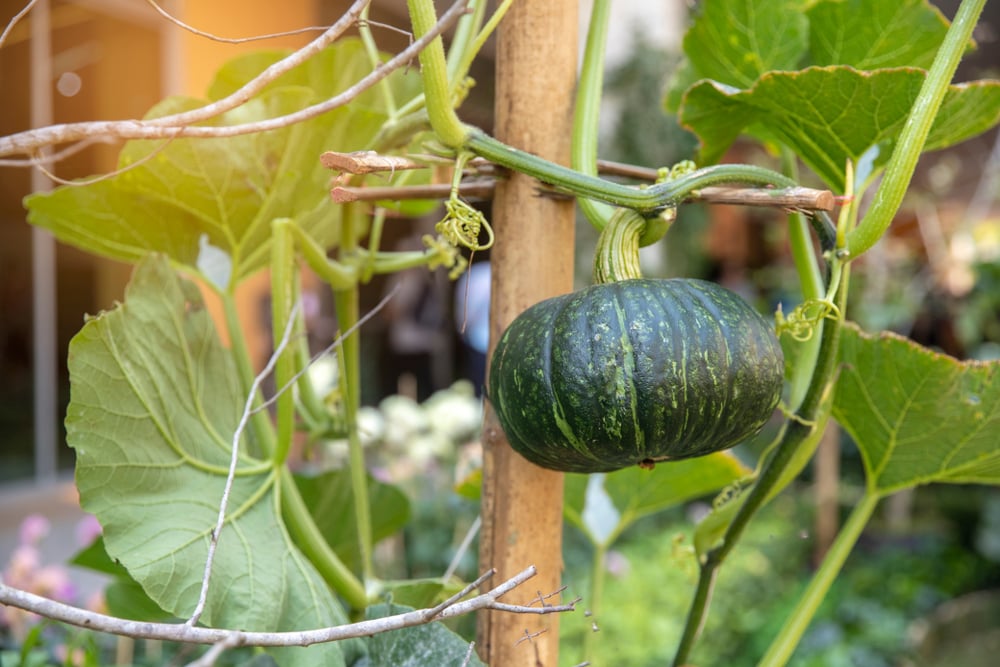
If you are sowing more than one plant, space them out well. The plants will get training for vertical growth, but they still need enough room underneath for the roots. Get two or three seeds into the prepared soil at a 1-inch depth and cover them with cloches.
4. Care for the Squashes
Squashes need a little care to ensure proper growth and fruit-bearing. Keep in mind that they are heavy feeders, so make sure that the soil is covered with mulch after planting. Regular garden compost also helps it lock in moisture. But remember to keep a little gap at the base of the plant.
Using a trellis means that the squashes will grow tall and therefore need more water. Inevitably, the upper leaves will lose moisture fast because of environmental factors like wind and sunlight. When the vines grow on the ground, they grow roots to absorb moisture and nutrients from it. But a trellis growing squash in the UKcannot receive the same water. Therefore you need to keep a good on your plant and water it frequently.

When the season of fruiting comes, irrigation becomes a top priority. The plant will also need proper feeding every 10 to 14 days when the fruits start swelling. Use a potassium-rich liquid fertilizer like tomato feed to get a grand harvest.
Summer squashes fruit for a long period. And you can keep your crop from mid-summer till the first signs of frost. However, regular picking is often encouraged as it makes the plant bear more fruit. In the case of winter squashes, harvest, and use can be done right away.
But for these winter squashes, let it ripen on the plant itself. The longer they are kept, the better they will be upon harvest. After that, lay it out for a couple of weeks so that the skin hardens. And finally, store it at 10–15°C for use during the long winter months.
5. Train the Growing Squash [UK]
Quashes have the habit of traveling horizontally, so is it even possible to force them to grow upright? Getting your squashes to stay vertical takes more than just wishing it to happen. They need some assistance and training. All you will need to do to tame those unruly growing squash in the UK is to weave or tuck them into the trellis.
As you care for it during the initial stage, the tendrils will then naturally grab the trellis and go along with it. But being careful is necessary, as the young vines may get damaged otherwise. For older vines that are heavier, tying them to the support does the job of conditioning.
![Train the Growing Squash [UK]](https://www.thearches.co.uk/wp-content/uploads/Train-the-Growing-Squash-UK.jpg)
The most readily available material to tie your vines would be jute twine. You can also opt for durable and reusable plant clips. Sturdy twist rolls are also a great option that can be cut to the length you need and adjusted accordingly. Twine or ribbons work just as well for young plants.
Just remember not to tie the knots too tightly, as that may strangle the plant later on. Keep an eye on the vine’s growth, and cut them off when the tendrils start holding on to the support. Squashes grow fast during summer, so check up on them every few days.
6. Maintaining the Setup
Once your squash has been established and is wrapping itself around the trellis, the rest is quite easy. You just have to choose 3 to 5 growing vines during the early stages and prune off the other peripheral growth. And whatever framework you choose, make sure they are about 12 to 13 cm apart at the poles.

As long as you keep tying the vines as they grow bigger, the structure should hold. Growing squash in the UK is fruitful and easy as long as the trellis remains and the fruits are supported. Harvesting season comes when the fruits are small, tasty, and have soft skin.
7. Benefits of Supporting Squash
There are many benefits to growing squash in the UK on a trellis, the least of which is the aesthetic appeal. No doubt they look gorgeous growing tall, but the plant and the crop also remain healthy throughout the whole time. The height makes it impossible for the pests to attack the fruit and leaves, marking it safe.
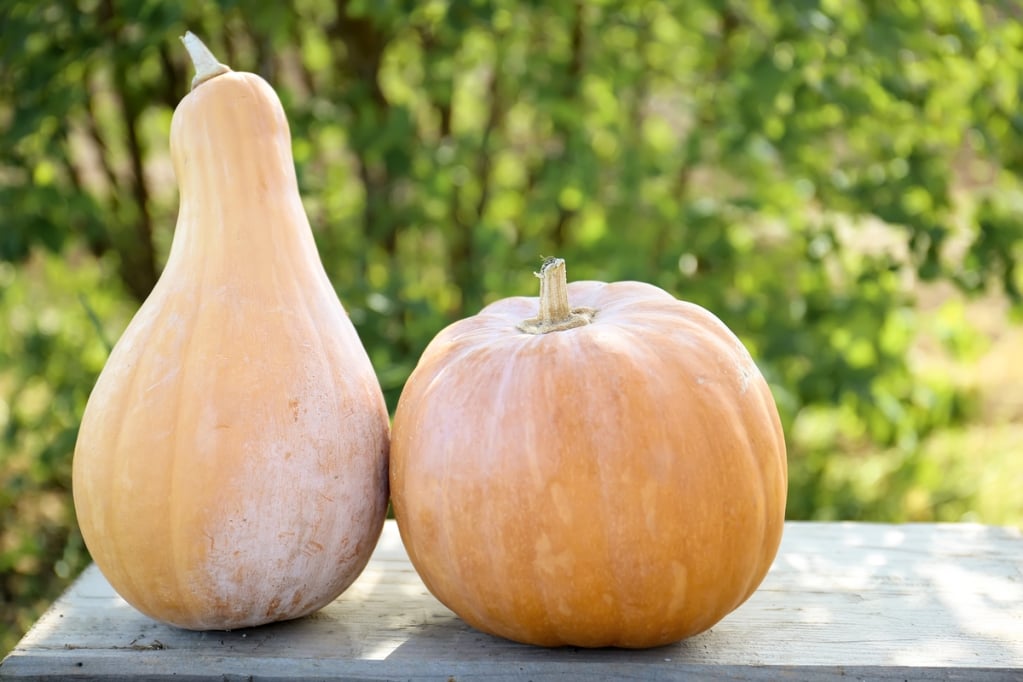
When vining squashes are left of the ground, the fruit and leaves become vulnerable as the soil splashes over them. This often leads to all kinds of diseases and fungal infections. As the squash grows at some distance above the ground, it remains clean. The fruit also remains free of yellow spots that are often found on ground-grown squashes.
Another major benefit of growing squashes on trellises is that they leave the rest of your garden free. You can use the soil in front of the trellis to grow other crops like lettuce, carrots, and beets. This way, you will have a variety of vegetables growing in a small space.
Final Thoughts
Squashes are excellent fruit that can be grown solely for their taste. But the tender plants need caring after if you want a good harvest. The best result is achieved when they are grown on trellises, away from the ground. That way, you won’t dedicate your entire garden to one plant.
But growing squash in the UK on trellises requires a few key points that should be remembered. They need a little nudge via twine to vine through the support and grow vertically. They also need frequent watering and looking after.
And if you want to know more about vining plants and gardening, comment below and let us answer your queries.


